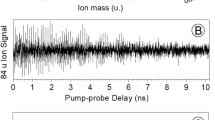Abstract.
The reflectometer D17 has been operational for a year and has already proved to be an excellent tool for investigating surfaces and interfaces in the realms of physics, biology and chemistry. The instrument has two modes of operation, time-of-flight and monochromatic, the latter incorporating the polarised-neutron option. Both modes are flexible in the wave-vector-transfer (q) resolution. The loosest resolution required to resolve the sample structure can be chosen (and hence the highest flux), enabling the lowest reflectivities and hence the widest q-range to be measured.
Similar content being viewed by others
Author information
Authors and Affiliations
Additional information
Received: 18 July 2001 / Accepted: 11 December 2001
RID="*"
ID="*"Corresponding author. (Fax: +33-476/207120, E-mail: cubitt@ill.fr)
Rights and permissions
About this article
Cite this article
Cubitt, R., Fragneto, G. D17: the new reflectometer at the ILL . Appl Phys A 74 (Suppl 1), s329–s331 (2002). https://doi.org/10.1007/s003390201611
Issue Date:
DOI: https://doi.org/10.1007/s003390201611




